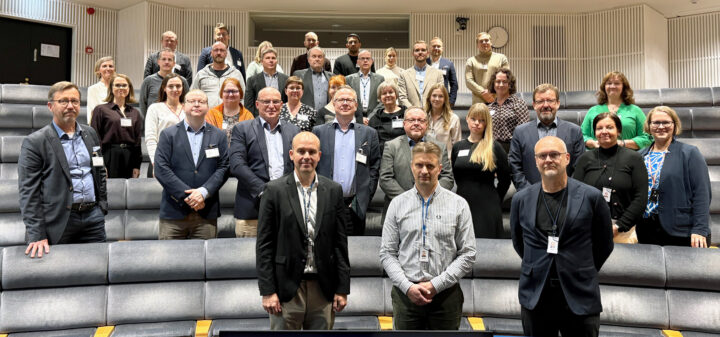The Vision for the Future Factory Must be Sufficiently Ambitious
LifeFactFuture convened for its fourth consortium meeting on September 17th in Espoo, hosted by Orion Pharma. The event featured a series of presentations showcasing the progress of various work streams.
Sammeli Liikkanen, Director of Digital Medicine at Orion Pharma, offered consortium members a forward-looking and inspiring perspective by sharing the work being done at Orion.
“Let’s collaborate and transform the whole pharma value chain in Finland – all the way from R&D into the hands of the patients – with data and AI.”
– Sammeli Liikkanen
Tero Villman, responsible for WP1 of the project, presented the concept of the life science factory of the future and outlined the next steps in advancing this work. Sammeli Liikkanen emphasised the importance of setting the bar and level of ambition high when it comes to the future life science factory concept. The concept sparked lively and enthusiastic discussion within the consortium.
We must aim for goals that may seem nearly impossible from today’s perspective in order to create something truly competitive in the future. For example, digital solutions related to regulation are one such area. Innovations like these can become sources of future competitiveness.
Veli-Matti Hautaniemi’s presentation, Advancing the Digital Transformation of the Built Environment through the Integration of Legal Frameworks and Digital Twins, was an example of the practical benefits of digitalisation in a factory environment.
Progress in Companies and Research Groups
In the Company Talks section, companies briefly shared updates on the progress of their own projects, which also fed into discussions about joint initiatives. Ample time was allocated for interaction and dialogue.
Miia Martinsuo and Maarit Päällysaho from WP2 led a workshop on Implementing digital innovations in manufacturing. The workshop focused particularly on the human component of digitalisation — how new technical solutions can be successfully implemented in work environments. Group discussions were lively, with participants sharing best practices — and important learning moments from failed implementations of the past.
The academic lead of the project, Toni Ahlqvist, summarised the day by noting that the project is progressing on multiple fronts. Research operations are advancing and scaling up organisationally, geographically, and temporally. The project is catalysing industry impacts, and the results are linked with R&D processes. The project is becoming increasingly strategic and captivating as participating organisations are witnessing its impact.
Photo and video: Tolga Karayel

